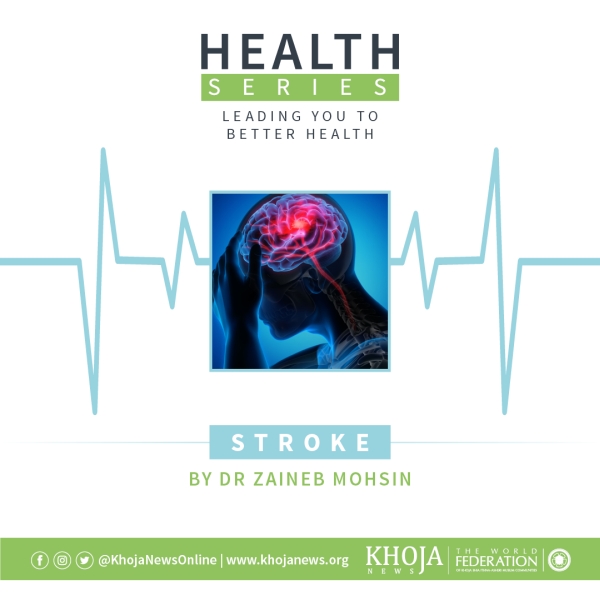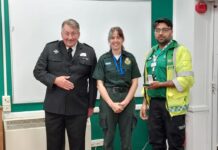Overview A stroke occurs when the blood supply to part of your brain is cut-off, preventing brain tissue from getting oxygen and nutrients, causing brain cells to die.
A stroke occurs when the blood supply to part of your brain is cut-off, preventing brain tissue from getting oxygen and nutrients, causing brain cells to die.
A stroke is also known as a cerebrovascular accident, CVA, or brain attack.
A stroke is a medical emergency, and prompt treatment is crucial. Early action can reduce brain damage and other complications.
Causes
There are two main causes of stroke: a blocked artery (ischemic stroke) or leaking or bursting of a blood vessel (haemorrhagic stroke).
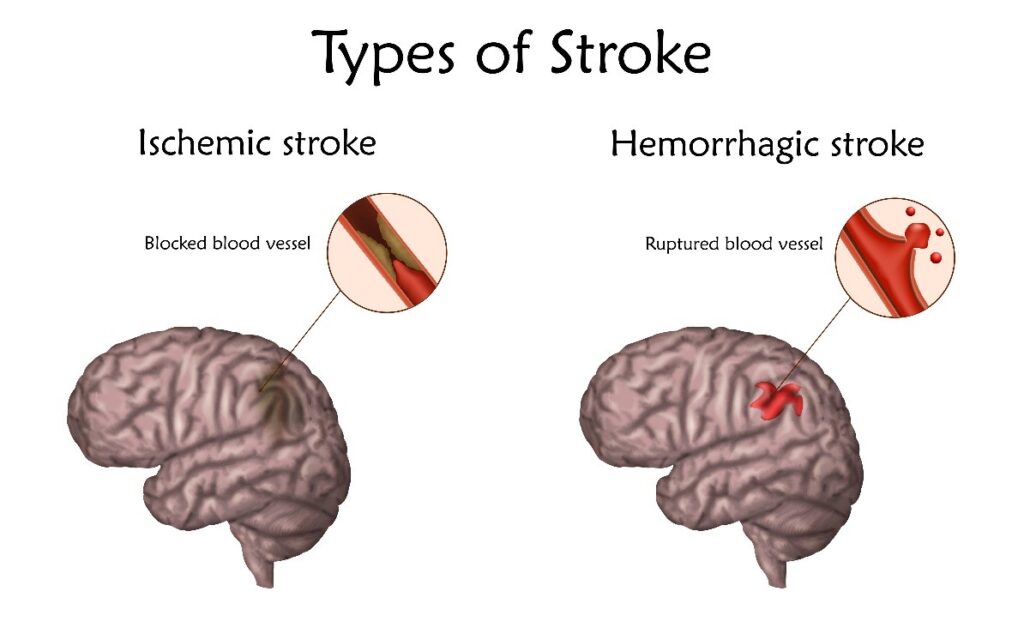
Risk factors of stroke
Some stroke risk factors can’t be controlled. These include gender, age, family history and previous stroke or mini-stroke
However, many stroke risk factors are lifestyle related:
- high blood pressure (This is one of the biggest risk factors)
- cigarette smoking
- diabetes
- raised cholesterol
- A diet high in fat (particularly saturated) and salt, but low in fibre, fruit and vegetables
- lack of regular exercise
- obesity
- atrial fibrillation (irregular heartbeat).

Are there any warning signs of stroke?
Ischaemic strokes are sometimes preceded by transient ischaemic attacks (TIAs), also called mini-strokes or temporary strokes. TIAs occur when there is a temporary blood clot and part of the brain does not get the supply of blood it needs.
Symptoms (which are similar to those of a stroke) occur rapidly and usually last a short time, from a few minutes to a couple of hours.
However, you should see a doctor urgently if you have a TIA, as you are at increased risk of having a full stroke. People who have a TIA should be referred immediately for specialist assessment and seen within 24 hours of their symptoms starting.
Symptoms
If you or someone you’re with may be having a stroke, pay particular attention to the time the symptoms began. Some treatment options are most effective when given soon after a stroke begins. The patient may:
- have sudden numbness, weakness or paralysis in their face or limbs, particularly down one side of their body;
- appear confused,
- have trouble talking or understanding speech
- have difficulty swallowing;
- have vision problems;
- have trouble walking;
- unsteadiness or a sudden fall; or
- have difficulty with co-ordinating their movements and keeping their balance.
- Headache. A sudden, severe headache, which may be accompanied by vomiting, dizziness or altered consciousness
- Sometimes a seizure (fit) or loss of consciousness occurs
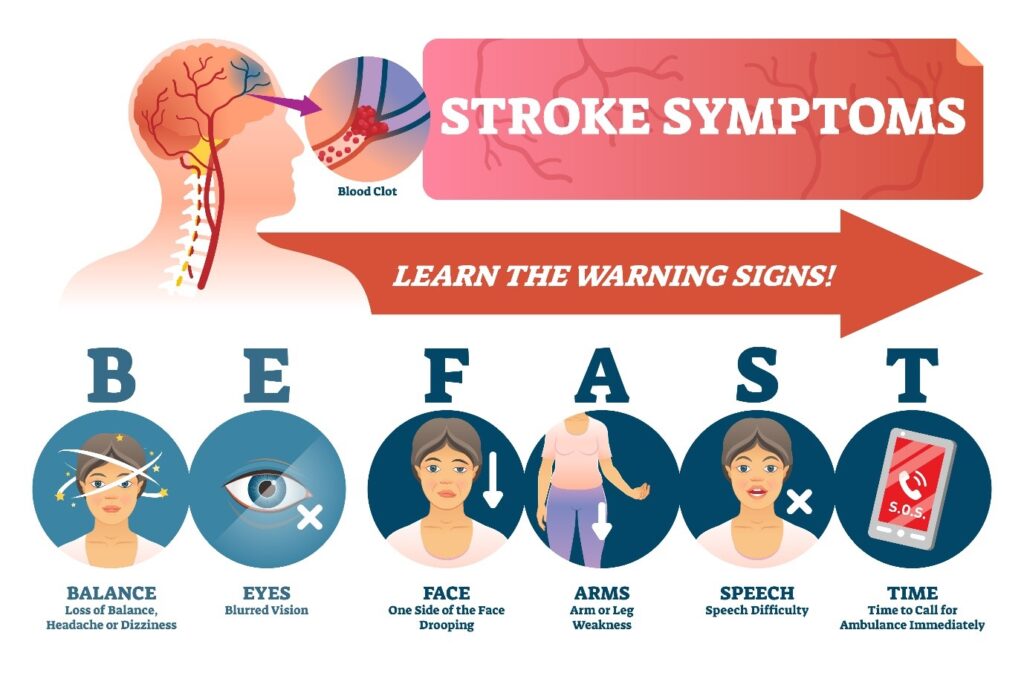
When to see a doctor
Seek immediate medical attention if you notice any signs or symptoms of a stroke, even if they seem to come and go or they disappear completely. Think “FAST” and do the following:
- Face. Ask the person to smile. Does one side of the face droop?
- Arms. Ask the person to raise both arms. Does one arm drift downward? Or is one arm unable to rise?
- Speech. Ask the person to repeat a simple phrase. Is his or her speech slurred or strange?
- Time. If you observe any of these signs, call emergency services immediately.
Don’t wait to see if symptoms stop. Every minute counts. The longer a stroke goes untreated, the greater the potential for brain damage and disability.
How is a stroke diagnosed?
Confirmation of diagnosis and initial treatment of strokes almost always takes place in a hospital.
Management of Stroke in Hospital
A doctor can usually diagnose a stroke by the typical symptoms and signs which develop suddenly. Tests which are commonly done include:
- A brain scan (CT scan or MRI scan). This can determine the type of stroke (ischaemic or haemorrhagic)
- Blood tests to check on such things as blood sugar level and cholesterol level.
- Chest X-ray and a heart tracing (ECG)
- Ultrasound scan of the carotid blood vessels (arteries) in the neck
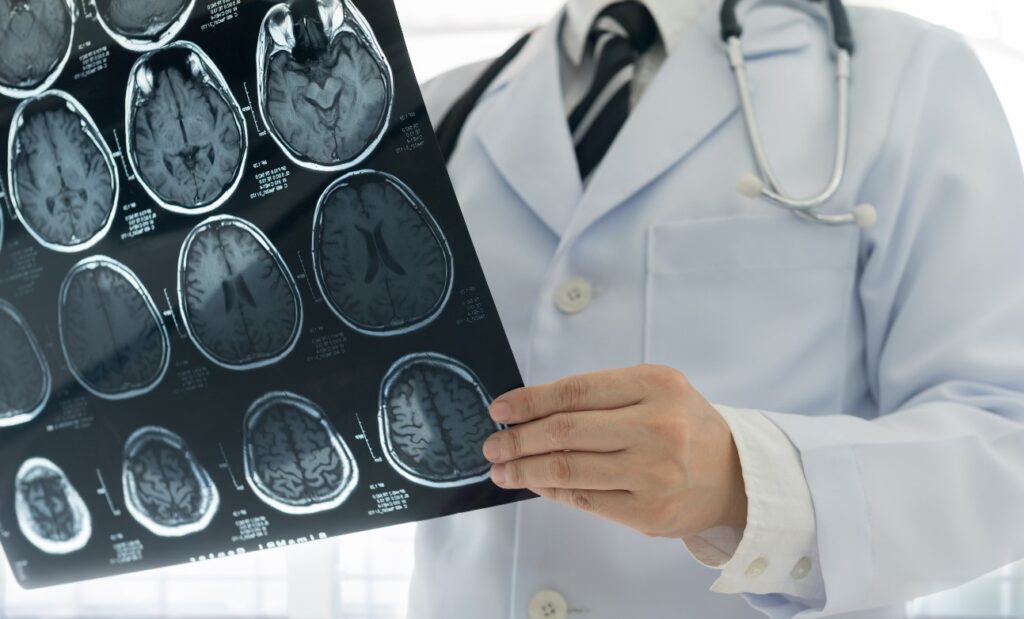
Thrombolysis (clot-busting)
If an ischaemic stroke is diagnosed and it has been less than four and half hours since symptoms started, you will usually be given a clot-busting medicine which aims to dissolve the blood clot. The medical word for this is thrombolysis. This can improve the eventual outcome. This is because brain cells that would have died are able to survive.
After effects of a stroke
The type and extent of disability caused by a stroke can vary greatly. It depends on the extent of the damage to the brain.
A large stroke can cause death. A small stroke may cause minor problems, which may go completely over time. In many cases the effects are somewhere in between these two extremes.
Rehabilitation following a stroke
Once a stroke has permanently damaged the brain, the damage can’t be completely undone. However, many symptoms can improve considerably following a stroke, because the areas of brain on the periphery of the stroke can recover.
As a result of advances in treatment and rehabilitation including physiotherapy, speech therapy and occupational therapy, many people who have had a stroke are able to live full lives.

Stroke prevention
Many stroke prevention strategies are the same as strategies to prevent heart disease. These include:
- Anti-platelet drugs. The most commonly used anti-platelet medication is aspirin. Your doctor can help you determine the right dose of aspirin for you and see if there are any contra-indications.
- High blood pressure. High blood pressure usually causes no symptoms but can be damaging to the arteries. If you have high blood pressure, treatment of the blood pressure is likely to have the greatest effect on reducing your risk of having a stroke.
- A high cholesterol level. This can be treated if it is high.
- Diabetes If you have diabetes, treatment to keep your blood sugar as near normal as possible is important.
- Smoking. If you smoke, you should make every effort to stop.
- If you are overweight, losing weight will help
- Inactivity. Aim to do some moderate physical activity on most days of the week for at least 30 minutes
- Diet. You should aim to eat a healthy diet. Briefly, a healthy diet means:
- AT LEAST five portions or ideally 7-9 portions of a variety offruit and vegetables per day. Aim to ‘eat a rainbow’. Choose fruit and vegetables that are different colours as each contains different health-promoting benefits. Fruit and vegetables contain vitamins and minerals, which may help protect against stroke. They are a good source of dietary fibre. Fibre can help to reduce the amount of cholesterol absorbed from your food into your bloodstream.
-
- INCLUDE 2-3 portions of fish per week. At least one of these should be oily (such as herring, mackerel, sardines, kippers, pilchards, salmon or fresh tuna).Oily fish contain omega 3 oils, which may help protect against stroke. They help your heart to beat more regularly and can help prevent blood clots. One serving is 100g/4oz once cooked; i.e. an average fillet or small tin of fish.

Authored by:
Dr Zaineb Mohsin
MBBch, MSc in Critical care (UK), MRCP(UK)
Qualified as a physician, trained in Endocrinology and Diabetes from Imperial NHS Trust and currently working as a research fellow in Metabolic bone disease at Oxford University


